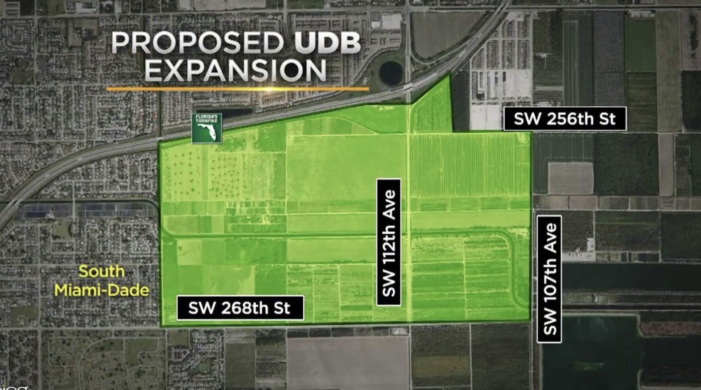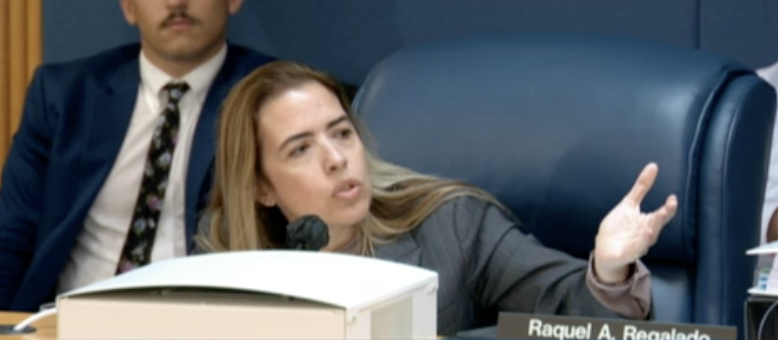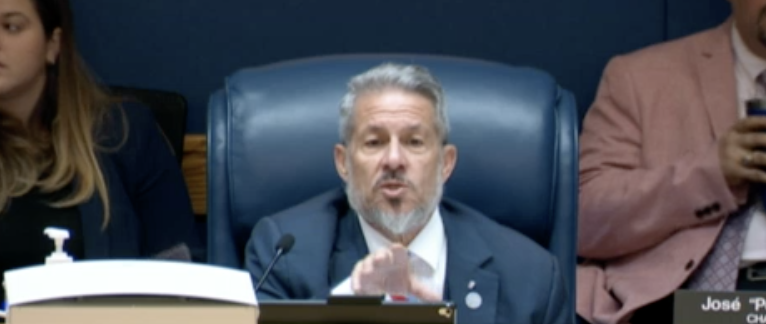The fourth time was the charm for the developers of the South Dade Logistics and Technology District, a 380-acre industrial and office park proposed on what used to be farmland — just over the Miami-Dade Urban Development Boundary.
They got the necessary 8-4 supermajority, instead of the 9 votes they would have needed if the vacant seat left by the removal of Joe Martinez was filled. But lobbyist Jeffrey Bercow et al can thank two commissioners in particular: Chairman Jose “Pepe” Diaz — who fought tooth and nail for them from the beginning — and Commissioner Raquel Regalado, who changed her vote from no to yes in exchange for (read: under cover of) getting some environmentally endangered lands in return.
And just like that, the property just south of Southwest 286th Street went from a value of about $21 million to more than $86 million.
Read related: Met with wide opposition, developers win 11th hour reprieve on UDB vote
That’s according to figures presented by Commissioner Danielle Cohen Higgins whose district the proposed industrial park is in and who made an impassioned plea to finally reject the application, as recommended by county staff, every state and federal agency, the Dade County Farm Bureau and almost everybody else in the world who hasn’t been convinced that it is the only way to get jobs down South.
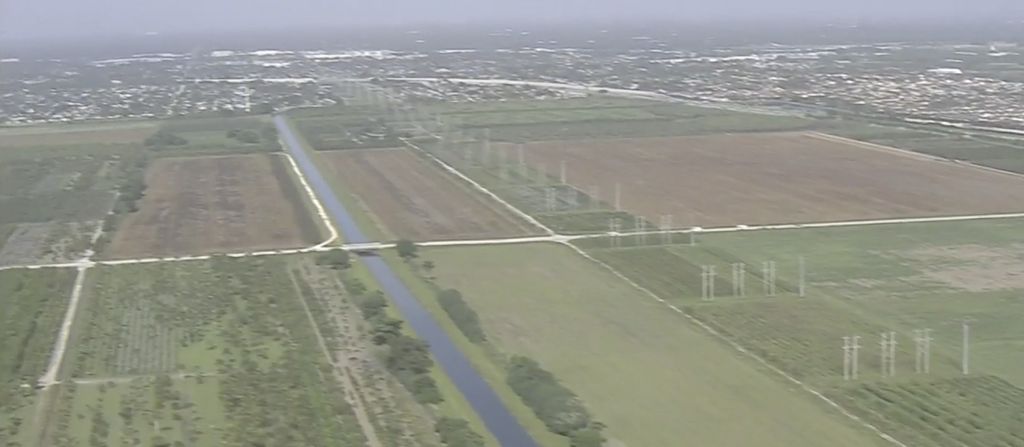
Even Sen. Marco Rubio chimed in, raising concerns about the future of Everglades restoration if this land is to be developed (Ladra is surprised commissioners Rebeca Sosa and Javier Souto voted against Marquito).
The property in question is also about two feet above sea level and prone to flooding. And we’re talking about “350 acres of new development on the edge of the Everglades with the image of Hurricane Ian still in our minds,” said attorney Paul Schwiep, who represents the Hold The Line coalition of organizations and individuals against moving the UDB for this project.
“That’s the definition of bananas.”
Saying that he was working pro-bono for the group, Schwiep also raised a concern about the fact that the developer kept getting another bite of the apple. “We’ve been playing this game of whack-a-mole and it’s the fourth time we’re here,” he said. “It’s an abuse of the process.”
Read related: Commissioners go out of their way to defend, promote moving the UDB
Once again, Diaz didn’t even try to hide his pro-developer bias by giving the applicants more time than he gave the Schwiep side. “We’re giving you a courtesy,” he said. “Equal time is not warranted here.”
Diaz also allowed the developer’s lobbyist to address Commissioner Kionne McGhee directly — something he always stops Joe Q. Public from doing. He’s a real double standard bearer, this one.
Basically, the developers came back this time — after failing to get a vote in May, in September and in October — with a promise to pay higher than the living wage, which is hollow and unenforceable. They also scared commissioners with reports of arsenic on the land they said would take about $47 million to clean up. They also offered to buy 622 acres of environmentally endangered lands and give it to the county in exchange for a yes vote.
This is what purportedly turned Regalado’s vote around. Her turnabout was surprising to some, especially in light of the fact that she voted last year to approve the development of the Calusa Golf Course specifically to protect the Urban Development Boundary.
“The other consideration that weighed on me here is the looming battle over the Urban Development Boundary. The County’s determination that we will be unable to develop new single family housing by 2024 is pressuring the County Commission to move the line with the argument that land for housing in the urban core is all but gone,” Regalado said in a statement after the Calusa vote almost a year ago. “This is why we must consider development inside the line if we are to preserve areas that are truly environmentally endangered and necessary for the preservation of our watershed.
Read related: Miami-Dade Commission votes to kill Calusa preserve for Kendall developer
“As someone fighting on a daily basis to solve our enormous septic-to-sewer issues and a big believer in our environmentally endangered lands (EEL) program, I think that we have to decide where we are willing to compromise as a community,” Regalado said in November of last year.
Looks like the compromise is everywhere.
If you like what you are reading and want more local government watchdog reporting, consider making a donation to Political Cortadito. Every little bit helps get more political shenanigans exposed.
Commissioner Rene Garcia, one of the no votes (along with commissioners Eileen Higgins, Sally Heyman and Cohen Higgins) congratulated the developers even before the vote because he saw that Regalado had switched sides, but called it a flawed process.
“We have, as a commission, succumbed to a flawed process,” he said about the multiple bites at the apple. “To me, it’s a really sad state of affairs we have here in Miami-Dade County when a group of developers… can have an ‘and then,’ ‘and then,’ ‘and then,’ ‘and then,’ ‘and then‘ it becomes a positive vote from the county commission.
Cohen Higgins made a great case against the development, raising issues about the application’s false statements and staged photographs. “Like our chairman said, it is important to be honest and not mislead,” she said, showing two very different photos of the same canal on the property. One shows what seems to be an exaggerated toxic situation.
“You decide to show a photo that is not reality,” she told developers. “This is not what it looks like.”
She read headlines about Amazon abandoning warehouses all over the country because of a change in trends after the pandemic, suggesting they did the same here and didn’t back out because the development was stalled. She read a list of available warehouse and newly-built industrial space in South Dade that is vacant. She asked if the developers had considered building up instead of horizontally, like they are doing in another project. She chided them for not having a single meeting with the community.
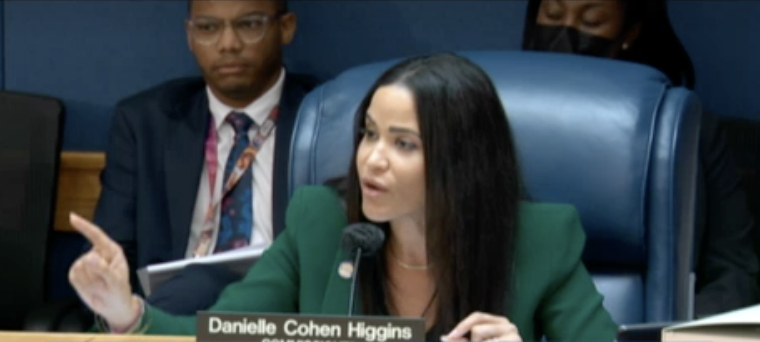
And then she talked about what she called “the elephant in the room,” which was the increase in the land value. Within the UDB, the land is valued at about $54,000 an acre. But two miles inside the UDB, the same land is worth $228,000 an acre, she said.
“With a vote today, we will be increasing land value from $20.5 million to $86.7 million just by moving the Urban Development Boundary,” Cohen Higgins said. “Just like that.”
And she seemed shocked that such a flawed and hated proposal would get so much consideration.
“I’ve never seen opposition to an application like this before. We have the commissioner of agriculture, the Department of the Interior against this. Yet the 10 of you have somehow the incredible influence to overcome all for that.
“I commend you,” she told the group of lobbyists and developers, “because it does look like it’s cooked. It’s so cooked, it’s burned.”
In the end, the other commissioners ignored her. Just like they ignored the public.

